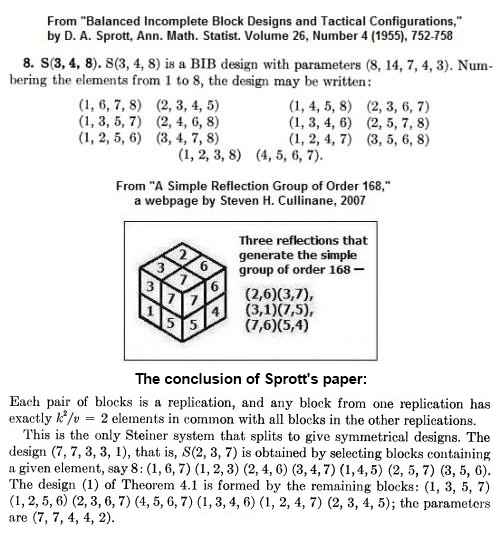
Commentary —
|
"The close relationships between group theory and structural combinatorics go back well over a century. Given a combinatorial object, it is natural to consider its automorphism group. Conversely, given a group, there may be a nice object upon which it acts. If the group is given as a group of permutations of some set, it is natural to try to regard the elements of that set as the points of some structure which can be at least partially visualized. For example, in 1861 Mathieu… discovered five multiply transitive permutation groups. These were constructed as groups of permutations of 11, 12, 22, 23 or 24 points, by means of detailed calculations. In a little-known 1931 paper of Carmichael [5], they were first observed to be automorphism groups of exquisite finite geometries. This fact was rediscovered soon afterwards by Witt [11], who provided direct constructions for the groups and then the geometries. It is now more customary to construct first the designs, and then the groups…."
5. R. D. Carmichael, Tactical configurations of rank two,
11. E. Witt, Die 5-fach transitiven Gruppen von Mathieu,
— William M. Kantor, book review (pdf), |











